How User Data is Revolutionizing the Enterprise?

Analytics has long been the focus in helping developers and designers craft software products that provide value. But recently, that focus has shifted to businesses as well.
The proof is in the stats. According to the most recent:
- 52% of businesses see big data as an opportunity for growth
- 76% of organizations plan increase investments in big data over the next few years
For organizations, the basic aim of data analytics is to convert the large amount of information they receive on a daily business into customer or business insights. Getting hold of the right data provides a lot of opportunities for businesses. In addition to helping them improve services, it spares stakeholders from spending resources on unnecessary solutions.
Here are some ways user data is bringing about a revolution in the enterprise:
1 – Retail

Bill Gates once said, “Your most unhappy customers are your greatest source of learning.” For businesses like retail, it can be hard to identify who these customers are. There are several reasons for this. One of the first challenges is volume. Retailers like clothing brands have billions of consumers buying their products every week. To maintain or grow this billion, and improve marketing efforts, a brand would have to analyze these consumers by considering factors like gender and age group. Doing so manually is labor intensive and takes too long.
Since big data came into the picture, there have been a lot of changes in how retailers market themselves and manage work processes:
Marketing: Before technologies like smartphones and mobile applications became household names, marketing was a matter of guesswork. Retailers today already knew the answer to what’s selling. The “why” factor eluded them, till now. Now online marketing resources like social media allow major retailers to monitor the latest buying trends more closely than ever before. With data acquired from this technology, retailers can detect patterns in customer behavior more efficiently and plan marketing efforts more intuitively than was possible before.
A lot of clothing and accessory brands are already cashing in on this revolution. The marketing team of a major luxury retailer, for example, tracks Pinterest pins to identify trending items. It then uses this data to promote these products in its store.
Inventory Management: Customers demand items to be available to them at all times. Yet, retailers do run out of stock especially during peak shopping seasons like Christmas and Thanksgiving. If it happens often enough, it can strain the relationship between a retail chain and its customers.
User data analytics comes to the rescue here as well. Some retailers have adopted data tracking technologies to keep track of inventoried items. Amongst these are smart shelves, weight sensors designed to inform backend systems of the quantity of items that remain on the shelves based on purchase by customers. The data gathered show management when stocks are running low.
2 – Medical Industry
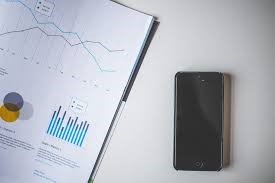
Medical professionals like doctors and physicians are experts in their respective fields. But they aren’t available to patients 24/7. Patients are recommended to keep tabs on their own health, which they can now thanks to tracking software. Technologies like apps are a goldmine of analytics data that:
- Give medical professionals invaluable insight into patient health without having to visit.
- Allow patients to take ownership of their own health
Medical Insights
Healthcare facilities have to keep track of thousands of medical health records, a lot of which span decades. With data analytics, it is now possible for such institutions to extract key insights from unstructured data. Texas based Seton Healthcare, for example, uses cognitive computing and data to gain important insights from patient medical history concerning annual visits to the hospital, outpatient information and emergency room visits.
Lifestyle Tracking
User analytics data makes the job of health professionals easier by helping people take ownership of their own health. One of these revolutions are fitness tracking applications; a perfect marriage of user data and wearable technology. These apps basically allow users to maintain healthy lifestyles by tracking metrics like the number of miles they run in their workout regimes. The Fitbit app, for example, enables users to track their daily fitness goals.
3 – Transportation

Much like data analytics has helped the medical and retail industry get a closer look into the behavior of customers and patients, it is also helping cities gain insights into traveler behavior and improve transport.
After all, there are certain reasons why commuters and drivers behave a certain way on the road. Data analytics allows city administrations to derive meaning from their actions which is helping them create solutions to solve common problems:
Maintenance of Public Transport Systems
Analytics data has a lot of potential in helping city administrations improve public transport for its citizens. The city of Melbourne, for example, uses real time data gathered from its state of the art public transit system to reconfigure routes in case of natural disasters or events. Sensors strategically placed in tracks and tram cars alert maintenance crews to problems. Once this data is received, crews are dispatched to resolve them before they become serious.
Traffic Control
Commuters are bound to run into traffic jams during peak hours. After all, you can never predict how drivers will behave on the road. Measuring such factors with field work has worked in curbing such issues before, but it is a slow process and is labor intensive. However, thanks to user analytics, several initiatives are being put in place to solve this problem. For example, New York city teamed up with Vision Zero, a road traffic safety project, to launch an initiative that uses data from Internet of Things technologies like sensors and cameras to gain a more informed perception on the city’s traffic condition.
With data analytics solutions, enterprises can detect patterns from unstructured data sets. Enterprises in industries like retail, medicine and transport are realizing the benefits of harnessing this information in creating solutions that provide real value.
Author Bio: Saad Khan is a digital marketing strategist and blogger who has a keen interest in writing about big data, analytics, data mining, enterprise applications, and business intelligence.

Kalyan Banga226 Posts
I am Kalyan Banga, a Post Graduate in Business Analytics from Indian Institute of Management (IIM) Calcutta, a premier management institute, ranked best B-School in Asia in FT Masters management global rankings. I have spent 14 years in field of Research & Analytics.








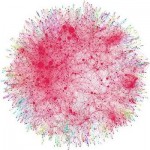
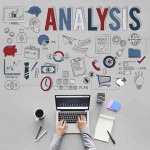
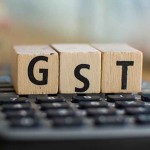
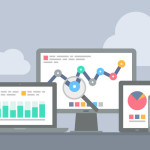
1 Comment
Beginners Guide to Custom Dimensions in Google Analytics - Fusion Analytics World
September 11, 2017 at 2:58 am[…] it’s more of how it’s done. The success of your digital campaigns depends a lot on the kind of insights you derive from your analytics report. With so much buzz around the report, it’s not unknown how it gives all the necessary information […]